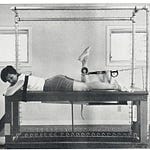
There are many reasons why one should want to maintain adequate muscle strength throughout life. Greater muscle strength correlates with reduced risk of all-cause mortality, reduced risk of falls, better ability to perform activities of daily living, and better recoveries after hospital admissions.
The most effective way to maintain or improve one’s muscle strength is by participating in resistance exercise with free weights or weight machines or by completing other muscle-strengthening activities such push-ups, pull-ups, or other body weight exercises.
Though decades of research has shown that resistance exercise is medicine, with regular participation causing an array of health and fitness benefits, a significant number of individuals do not meet the recommended guidelines for participation in muscle-strengthening activities established by the American College of Sports Medicine (ACSM) and U.S. Department of Health and Human Services. According to these organisations, for optimal health and fitness benefits, individuals should try to complete at least two days per week of muscle-strengthening activities for all major muscle groups, using body weight resistance, elastic bands, free weights, weight machines, or other strength training machines.
According to my review of the epidemiological literature, published in 2023, about 80% of people do not meet the recommended guidelines for participation in muscle-strengthening activities. Moreover, not only do many individuals not meet the guidelines, but a substantial proportion, about 58%, do not participate in any muscle-strengthening activities. With regard to resistance exercise with free weights and weight machines, arguably the most effective method for increasing muscle strength, approximately 80% of individuals do participate in any of this type of activity.
Many factors serve as “barriers” to participation in physical exercise. The most commonly cited barrier is perceived lack of time. Most people say they are too busy to exercise. They have families, they work full-time, and they have various social obligations that consume their schedules. For many people, exercise gets pushed down the priority list. It sits low on the value hierarchy.
With a substantial number of individuals not participating any resistance exercise, and with perceived lack of time as one of the most cited reasons for lack of participation, some researchers have started to consider whether small amounts of strength training, which take less time to complete than traditional approaches, might also warrant consideration in public health messaging about participating in muscle-strengthening activities. This relatively new concept is called minimal dose resistance exercise, and our research team defines it as “resistance exercise that does not meet guidelines recommended by professional exercise organizations but that still has the potential to improve muscle strength.”
To the extent that minimal dose resistance exercise might improve health and fitness, this should be understood given the large number of people not exercising and the possibility that initial engagement in small volumes of exercise might serve as a “gateway” to more frequent participation. Nevertheless, few researchers have attempted to describe minimal dose strategies and their impact on health and fitness. Thus, my colleagues and I recently published a paper in the journal Sports Medicine, titled, “Resistance Exercise Minimal Dose Strategies for Increasing Muscle Strength in the General Population: An Overview.”
In our overview paper, we identified and defined five different minimal dose resistance exercise approaches. We then summarised the evidence regarding the extent to which these types of training programs,1 when performed over multiple weeks, increase muscle strength compared to no resistance exercise at all. The five minimal dose strategies that we summarised were “Weekend Warrior,” single-set resistance exercise, resistance exercise “snacks,” practicing the strength test, and minimal dose eccentrics.
Weekend Warrior
The Weekend Warrior approach minimizes training frequency. It involves performing all of one’s weekly exercise volume in a single training session, which for many people, is likely to occur on a Saturday or Sunday, when they are not working.
We found fairly clear evidence that performing one resistance exercise session per week increases muscle strength and some other outcomes of health and fitness compared to no resistance exercise at all, though greater improvements would be seen with more frequent exercise that causes higher training volumes. Nevertheless, if individuals are not currently engaging in any muscle-strengthening activities, but they do have time to engage in one longer exercise session during the week, then they should be encouraged to do so.

Single-set resistance exercise
Single-set resistance exercise was the second minimal dose approach that we overviewed. Single-set resistance exercise is one set of multiple exercises performed multiple times per week. The single-set approach minimizes the number of sets per exercise and thus minimizes session duration. Typically, single-set programs are characterised by a training frequency of three days per week and involve exercise for all major muscle groups in each session. We considered single-set resistance exercise a minimal dose approach because some professional organisations recommend that the minimum number of sets per session be no less than two.
We found fairly clear evidence that single-set resistance exercise programs that include four or more exercises per session, and are performed two or more times per week, significantly improve muscle strength and some other outcomes of health and fitness, though programs that involve multiple exercise sets, and thus greater volume of work, will lead to further improvements. Thus, we concluded that single-set resistance exercise can be recommended to people not currently participating in any muscle-strengthening activities.
Snacking
The third minimal dose strategy that we overviewed was resistance exercise “snacking.” Exercise snacks are brief bouts of exercise performed once or more daily. Snacks usually last between one and 10 minutes. This reduced session duration occurs because the number of exercises and exercise sets are reduced.
Snacking is a novel approach to resistance exercise because guidelines for exercise have historically suggested that to do the act of muscle strengthening one needs to go the gym multiple times per week for extended periods, usually between 30 and 90 minutes. Exercise snacks break this historical trend. They represent a more spontaneous and convenient way to participate in muscle-strengthening activities. Snacking is most aligned with home- or office-based exercise programs where someone has continued and convenient access to resistance exercise equipment. With these programs, a person might take a five-minute break from their work at home to perform two or three sets of bicep curls, followed by another hour or two of work, and then another five-minute snack involving two or three sets of lateral raises, and so on.
We found evidence that resistance exercise snacks increase muscle strength and some other outcomes of health and fitness. This evidence included a series of studies that found that daily exercise snacks that targeted the muscles of the neck and shoulder improved strength and reduced neck pain in individuals who had neck and shoulder pain.
Practicing the strength test
We also overviewed two other minimal dose approaches: practicing the strength test and eccentric minimal doses. Practicing the strength tests involves performing one repetition per set using a maximal resistance and doing this for one or more sets in a session. This strategy minimizes the number of exercise repetitions. Many studies have found that if people practice maximal isometric efforts daily, their strength will improve, particularly on the isometric exercise they performed in training. Though practicing the strength test is likely to be an impractical or undesirable training strategy for the recreational exerciser who performs non-isometric efforts with free weights and weight stack machines, this strategy could have other implications. Namely, daily practice of the isometric strength test, such as grip strength, could be a useful strategy for speeding up strength recovery in rehabilitation from stroke and other motor impairments.
Minimal dose eccentrics
Minimal dose eccentric resistance exercise was the last minimal dose strategy we examined. Eccentric refers to the part of the exercise repetition when the muscle is creating force while it is lengthening, for example, during the lowering phase of the biceps curl. The reason that this phase of the exercise repetition is of interest to researchers and practitioners is because muscle force is about 40% greater during this part of the exercise than during the concentric or lifting phase. Moreover, training that focuses only on the eccentric phase is known to cause significant improvements in muscle size and strength.
However, exercise guidelines from professional organizations have historically not focused on the potential unique contribution of the eccentric phase of exercise. The primary reason for this has been that traditional strength training equipment, such as free weights and weight machines, do not accommodate for the fact that muscles are stronger when lowering than lifting weights. With traditional equipment, the same weight is used in both phases of the exercise repetition. However, new strength training technologies are allowing exercisers to experience different resistances in the eccentric and concentric phases of the exercise such that eccentric overload and eccentric-only training are now possible at home and at the gym.
In our overview of proof-of-concept studies on minimal dose eccentric resistance exercise, we found evidence that when a specific muscle group, such as the biceps, undergoes eccentric snacks of moderate- or maximal-intensity, its strength increases. Thus, if an individual has access to specialised equipment that allows for eccentric overload or eccentric-only resistance exercise, then they can be encouraged to perform minimal dose eccentrics to help improve the strength of their muscles.
Conclusion
From our overview of the five minimal dose approaches, we concluded that minimal dose approaches to resistance exercise usually increase muscle strength, and sometimes, they also improve other aspects of health and fitness. The minimal dose approaches with the strongest evidence are Weekend Warrior and single-set resistance exercise. Snacking and eccentric minimal doses are emerging concepts with promising results, and there is no physiological reason to think these approaches would not be consistently effective at increasing muscle fitness.
However, we caution readers against misinterpreting our conclusions. Importantly, we are not saying that someone’s goal should be to complete only a minimal amount of resistance exercise. If someone can do more physical exercise, then they should do it. A dose-response relationship exists with physical exercise. In general, greater doses or volumes of exercise will result in greater improvements in health and fitness.
We also are not saying that the results of our review apply to athletes, bodybuilders, or powerlifters. They do not. The review considered studies in which the participants were not highly trained lifters or athletes.
Instead, we are saying that if someone is not participating in any resistance exercise because they feel strapped for time, and they believe that the only way to do resistance exercise is by going to the gym 3-5 days per week for 1-2 hours per session, then they should be informed that minimal dose strategies, which involve little time investment, improve muscle strength and some other outcomes of health and fitness. In other words, all we are saying, is that doing something is better than doing nothing.
Related Content at The Nuzzo Letter
SUPPORT THE NUZZO LETTER
If you appreciated this content, please consider supporting The Nuzzo Letter with a one-time or recurring donation. Your support is greatly appreciated. It helps me to continue to work on independent research projects and fight for my evidence-based discourse. To donate, click the DonorBox logo. In two simple steps, you can donate using ApplePay, PayPal, or another service. Thank you.
Most of the resistance exercise programs in the review involved study participants exercising with moderate or heavy resistances.

















